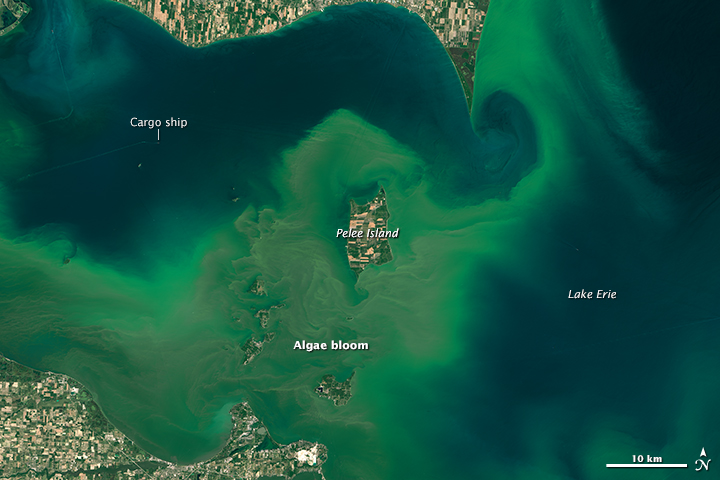
Severe Algae Bloom Forecast For Lake Erie This Summer
HELP FIGHT ALGAE BLOOMS IN LAKE ERIE. SIGN THE PLEDGE HERE.
ENVIRONMENTAL DEFENCE, CANADIAN FRESHWATER ALLIANCE, AND FRESHWATER FUTURE CANADA
For immediate release: July 13, 2017
Environmental groups urge action to protect Lake Erie following severe algae bloom forecast
Toronto, Ont. – The U.S. National Oceanic and Atmospheric Administration’s (NOAA) severe algae bloom forecast for Lake Erie is a reminder that ongoing efforts to address runoff pollution into the lake are woefully inadequate, say Environmental Defence, the Canadian Freshwater Alliance, and Freshwater Future Canada.
“Although residents got off easy last year due to an unusually dry spring and summer, this year’s forecast is a reminder that Lake Erie’s algae problem hasn’t gone away,” said Ashley Wallis, Water Program Manager with Environmental Defence. “We need governments to address runoff pollution from agricultural lands if they’re serious about a healthy Lake Erie.”
It was only three years ago that nearly 500,000 Toledo, Ohio and Pelee Island, Ont. residents went without safe tap water for days due to a toxic algae bloom. And this year’s forecasted blooms could also have negative impacts for the lake as well as for the people who live and work near it. They could cause beach closures, kill fish, and add additional water treatment costs. According to one report, if action isn’t taken to solve this problem, Lake Erie algae blooms could cost Ontarians $272 million a year.
The main cause of the blooms is phosphorus running off agricultural lands. The Ontario and federal governments, and their U.S. counterparts, have made commitments to tackle algae blooms by reducing the amount of runoff pollution entering the lake. Earlier this spring, the Ontario and federal governments released their draft action plan on how to achieve this. However, the plan needs to be strengthened to adequately address algae.
“The draft action plan is little more than a laundry list of existing programs and initiatives,” said Raj Gill with the Canadian Freshwater Alliance. “Governments need to ensure the final action plan lays out a strategy for success, with new tools, tactics and funding.”
“At a minimum, the final action plan needs to have clear timelines on when we can expect the health of the lake to improve; incentives and support programs to help farmers reduce nutrient runoff; and funding to ensure the plan gets implemented,” added Nancy Goucher with Freshwater Future Canada.
The groups call upon the Canadian and American governments to move quickly to reduce runoff pollution and fight the increasingly frequent and severe algae blooms that threaten the health of the lake, for the people and fish that depend on it.
ABOUT FRESHWATER FUTURE (freshwaterfuture.org): Freshwater Future works to ensure the healthy future of our waters in the Great Lakes region. We help citizens engage in efforts to protect our natural environment by providing grants and offering consulting assistance to diverse communities and collaborators.
For more information or interview requests, please contact:
Nancy Goucher, Freshwater Future Canada, 647-749-9472 ext 2, [email protected]
